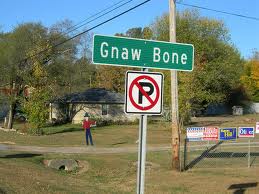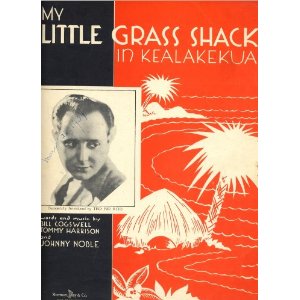Actually, the only thing that seems to make Indiana distinctive in any way is its use of lots and lots of “new’s.” I’m talking New Philadelphia, New Pittsburgh, New Chicago, New London, New Paris …
Just to be super, super boring, though, they made sure that plenty of these made a complete set. What that means is that you’ve got Philadelphia and New Philadelphia, Washington and New Washington, London and New London, Lisbon and New Lisbon ...
So, here we go … Sigh.
10. Chili
Some ground beef; a can of beans; another of tomatoes; some chili powder; a little garlic, cumin, and oregano … and you’ve got yourself a town!
Well, I found plenty of references to the dish, the restaurant, the pepper, and even a band (The Red Hot Chili Peppers, to be exact). Not a whole lot on a town in Indiana named Chili however. (Though I did learn it’s pronounced CHAI-lai, with two hard i sounds. How disappointing.)
It looks like it’s in the north central part of the state, along the Eel River. Mmm, eel chili! My personal fave.
Note bottom left
(available on Amazon!)
9. Solitude
I’m guessing there’s a fair amount of that in this state. I’m not sure how necessary it is to advertise the fact like this though.
Solitude seems indeed to have plenty of just that. The only place I could find anything on it was Google Maps. There, I could spot about a dozen houses and a dump. Solitude’s in the lonely, far southwest part of the state, the little toe between the Wabash and Ohio Rivers.
It seems entirely appropriate that one of the first results I got on Google for this place was the following:
Meet Senior singles in Solitude, Indiana (datingforseniors.com)
8. Zulu
I found a couple of sites that said Zulu was “named after the African tribe.” Well, duh. Enquiring minds wants to know why it was named after the African tribe. It’s not what immediately comes to mind when tasked with naming a new settlement – for me at least.
Zulu’s in the northwest part of the state, along the Lincoln Highway, old US 30. It looks like we’ve got a dozen houses, an RV store, and a Mexican restaurant.
And an old garage from
Lincoln Highway days
Lincoln Highway days
7. Nulltown
I looked and I looked, but I just couldn’t find this place. So strange …
Seriously, I could find this place. I just couldn’t find that much on it. It looks like we’re in the east central part of the state. I see a couple dozen houses, a couple dozen trailers, and … whoa! … an airport! The Nulltown Wingnuts Ultralight Airport, to be exact. Not every little burg get’s its own airport, you know.
Interestingly, I was able to find a source for the name. According to History of Fayette County, Indiana (1885), this place was named after the Null brothers, Michael and Israel, who built a mill there. It was settled way back in 1815 or thereabouts.
Downtown Nulltown
6. Bean Blossom / Beanblossom
This town was named for Beanblossom Creek, which makes sense. But the creek itself was named for some guy named Beanblossom … which makes no sense at all.
That said, Ancestry.com does tell me that Beanblossom is a legitimate surname. It comes from the Swiss German Bohnenblust, a compound of bohne (“bean”) + blust (“blossom”).
This tiny town in the south central part of the state is one happening place. I’m talking the oldest bluegrass festival in the country, a BikerFest, and a blues festival.
I don’t know why any town
would want bluegrass fans
would want bluegrass fans
5. Buddha
The unofficial capital of Indiana’s Zen Triangle, in the south central part of the state, Buddha includes a cliff-side monastery, several impressive stupas, numerous temples, a 30-foot gold-covered statue of the Master, and the official residence of the Dalai Lama of the Midwest.
Actually, Buddha’s a diminutive burg with a dozen houses, one business (J&J Construction), and … er … well, that’s about it. Interestingly, though, there is some information out there on proper pronunciation. Like Chili, above, it’s not pronounced like you’d think. It’s traditionally pronounced “BOO-dee.”
There are also several theories out there about how it got its name:
- Suggested by a travelling salesman
- Named after a hobo of said name (and who was himself short, fat, and bald)
- Named after the original settlers, named “Bodey”
From Buddha’s MySpace page
(Don’t ask. I haven’t a clue)
(Don’t ask. I haven’t a clue)
4. Bippus
“Oh, Harry, you’re such a bippus.” “Get your hands off my bippus, young man!” “Man, breaking down in the desert sure was a major bippus in our plans.” Take your pick.
Actually, the town was named for George J. Bippus, who got the railroad to lay tracks through it. Ancestry.com tells me the surname is Moldavian (?!?!) and – somewhat mysteriously – “unexplained.”
Bippus claims one famous son, broadcaster Chris Schenkel. There is also a Bippus State Bank, which recently celebrated its 100-year anniversary. Finally, Bippus has its own blog, from some cranky farmer guy with a lot of time on his hands.
Remember this dude?
3. Toad Hop
As far as I can tell, this place was named after the frogs, called “hop toads,” that come up out of the adjacent Big Sugar Creek when it floods. Not exactly sure why the two words switched place unfortunately.
This diminutive burg of 100 is basically a suburb of Terre Haute. It’s on the National Road, old US 40.
Old US 40 bridge near Toad Hop
(Sorry, I’m a sucker for these old highways)
(Sorry, I’m a sucker for these old highways)
2. French Lick
When you put “French” in front of a word, it usually implies something dirty and/or impolite – French kiss, French letters, French leave, French postcards, the French disease. I’m not sure I even want to know what a “French lick” is.
Turns out it was simply a French trading post near a salt lick. It was originally called Salt Spring, and the springs there gave rise to its importance as a spa town. Casinos, celebrities, and even the Chicago Cubs (who came there for spring training in 1943) were all part of the mix.
Nowadays, the town of 1,800 is home to the totally refurbished French Lick Resort, which includes a couple of hotels, a casino, multiple golf courses, and stables.
Oh, almost forgot … It's also the birthplace of the greatest basketball player EVUH! – the “Hick from French Lick,” the great Michael Jordan.
The Michael Jordan Birthplace National Shrine and Casino
1. Gnaw Bone
This one is pretty funny in itself. But what really makes it so great is its etymology. Turns out Gnaw Bone started out as Narbonne, after the town in southern France. Stick that in your southern Indiana hillbilly translatin' machine, and that's what you get.
Gnaw Bone likes to style itself as the “flea market capital of the world.” There’s one for every five Gnaw Boners.
Gnaw Bone is also home to the world-famous Gnaw Bone tenderloin, a breaded pork tenderloin sandwich served at the local Gnaw Mart. Read more here and here.
All parking is strictly forbidden
within the Gnaw Bone city limits
Honorable Mention:
- B-o-r-i-n-g – Indiana Beach, Farmland, Forest, Home Place, Southwest, South Center, Center Point, Central, Center
- Short & sweet – Tab, Toto, Max, Bud, Duff, Delp, Kelp, Art, Ade, Amo, Ari, Ora, Ege
- Just a little out of place – just way, way too many
- A bad case of the news – New Richmond, New Pittsburgh, New Chicago, New Washington, New Boston, New Philadelphia, New Amsterdam, New London, New Lisbon, New Paris
- A bad case of the cities – Michigan City (but also Michigan Town), Rome City, Star City, Gas City *
- Numerically oriented – Nine Mile, Twelve Mile
- Native American mouthfuls – Loogootee, Mishiwaka, Tippecanoe
- Atypical adjectives – Alert, Correct, Domestic, Carefree, Fickle
- Abnormal nouns – Exchange, Eminence, Economy*, Leisure, Windfall, Cyclone, Raccoon, Trout, Walnut, Bourbon, Pimento, Aroma, Sulphur, Petroleum, Fiat, Surprise, Speed, Speedway, Jockey, Deputy, Lamplighter, Daylight, Lapel, Stone Head, Story
- Unconventional verbs – Advance, Retreat, Roll
- Fun to say – Phlox, Mongo, Otterbein, Oolitic, Tunker, Trevlac (Calvert backwards), Salamonia, Churubusco, Kokomo
- Orthographically challenged – Azalia, Artic, Disko, Scircleville (there is also a Circleville), Cumback, Grammer
- Just plain weird – Needmore (there are actually two), Town of Pines, Peppertown, Jimtown, Judyville, Ray’s Crossing (look, there he goes now!), West College Corner, Central Barren, Royal Center, Young America, Switz City, Spraytown, Starlight, Moonville, White Cloud, Steam Corner, Crows Nest, Roachdale, Loafers Station, Beehunter, Popcorn, Antiville
- I’d like you to meet – Earl Park, Mariah Hill, Rob Roy, Newton Stewart, Santa Claus, Rocky Ripple
- Ghost towns – Africa, Door Village, Prophet’s Town, Monument City, Quick City, Old English, Asphaltum
* - author has visited




































